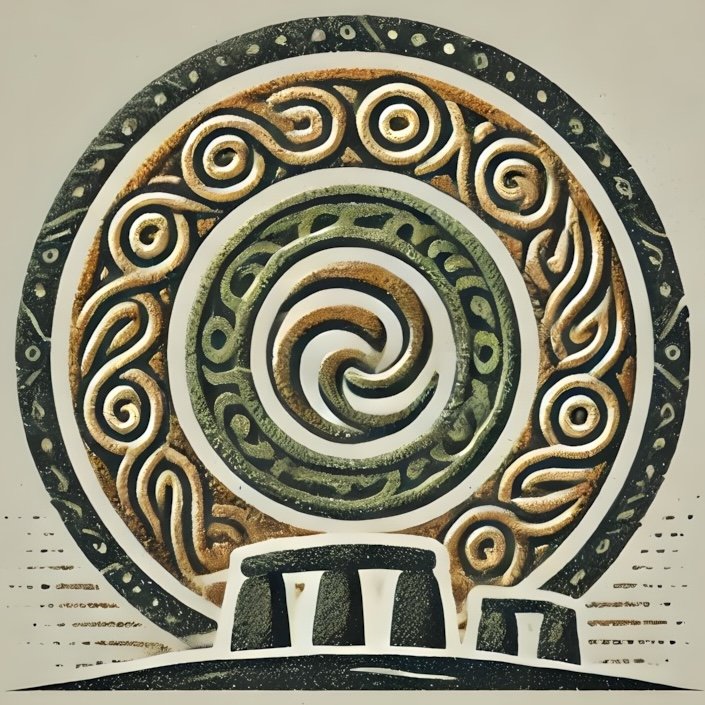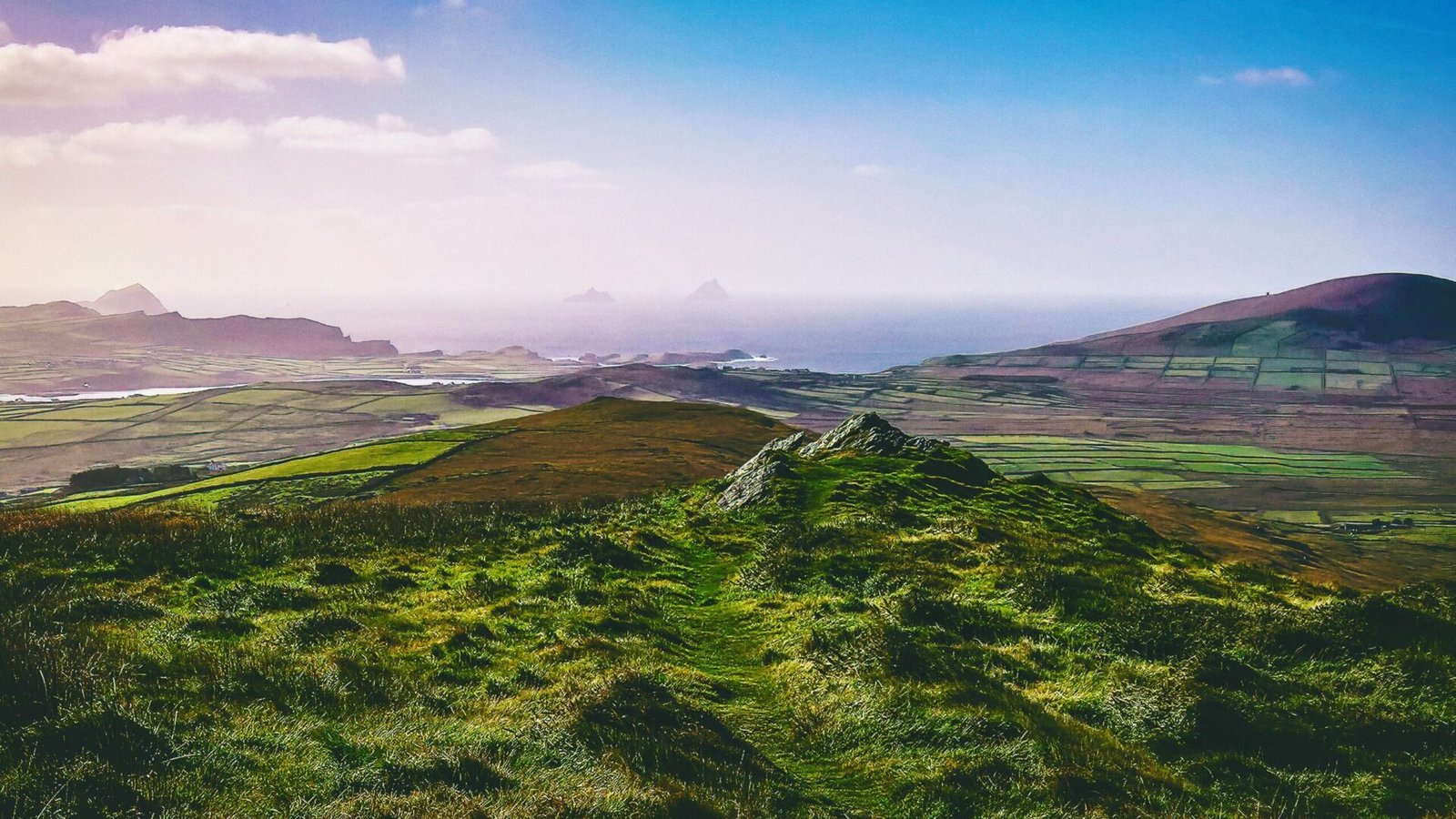Ireland, a land steeped in rich history and vibrant mythology, offers a captivating tapestry of sacred landscapes that echo with the stories of ancient peoples and their deities. From the majestic hillforts that once served as royal centers to the mystical realms inhabited by legendary heroes, the Irish landscape is a living testament to a time when the natural world was imbued with spiritual significance. This pillar page explores the sacred landscapes of Ireland, delving into the hillforts and royal centers, the role of druids and religious practices, and the enchanting mythology that continues to shape the Irish identity.
Hillforts and Royal Centers
The physical landscape of Ireland is dotted with hillforts and royal centers that served as significant sites of power, community, and spirituality. These ancient structures, often perched on elevated terrain, were not merely fortifications; they were the epicenters of social, political, and religious life. One of the most renowned hillforts is the Hill of Tara, located in County Meath. Tara was the seat of the High Kings of Ireland and is steeped in myth and legend. It is said to be a place where the earthly and the divine intersected, where kings were inaugurated, and where the ancient assembly of the Tuatha Dé Danann, the mythological race of gods and heroes, was believed to gather.
Another significant site is the Grianan of Aileach in County Donegal, a stone fort that offers breathtaking views of the surrounding landscape. This hillfort is associated with various legends, including those of the legendary king Niall of the Nine Hostages. Such sites were not only strategic military locations but also spiritual hubs where rituals were performed to honor the gods and seek their favor.
The alignment of these hillforts with celestial events, such as solstices and equinoxes, further underscores their sacred significance. The ancient Irish were keen observers of the heavens, and many of their rituals were closely tied to the cycles of nature. The landscape itself became a canvas upon which the stories of the gods were painted, as hills, rivers, and stones were imbued with meaning and reverence.
The Role of Druids and Religious Practices
Central to the spiritual life of ancient Ireland were the druids, a class of priests, scholars, and philosophers who acted as intermediaries between the gods and the people. The druids held a revered position in society, possessing knowledge of the natural world, healing practices, and the oral traditions that preserved the myths and histories of the Irish people. They were seen as wise guides, offering counsel to kings and communities alike.
Druidic practices were deeply intertwined with the sacred landscapes of Ireland. Rituals often took place in groves, near rivers, and at ancient stone circles, where the druids would invoke the presence of the gods and perform ceremonies to mark significant life events, such as births, marriages, and deaths. The reverence for nature was paramount, as the druids believed that every tree, stone, and stream held a spirit or a deity. This animistic worldview fostered a profound connection to the land, which was seen as a living entity deserving of respect and care.
One of the most famous druidic rituals involved the celebration of Samhain, a festival marking the end of the harvest season and the beginning of winter. It was believed that during this time, the veil between the worlds of the living and the dead was thinnest, allowing for communication with ancestors and otherworldly beings. Bonfires were lit, offerings were made, and the community came together to honor the spirits of the land and their forebears.
As Christianity began to spread across Ireland, many druidic practices were absorbed into the new faith, creating a unique blend of traditions that continue to influence Irish culture today. The sacred landscapes that once served as sites of pagan worship became places of Christian pilgrimage, yet the echoes of the old beliefs remain, reminding us of the enduring connection between the land and its people.
Mythology: The Fianna, Cú Chulainn, and the Otherworld
Irish mythology is a treasure trove of stories that illuminate the sacred landscapes and the gods that inhabit them. Among the most celebrated tales are those of the Fianna, a legendary band of warriors led by the heroic figure Fionn mac Cumhaill. The Fianna roamed the hills, forests, and lakes of Ireland, embodying the spirit of adventure and bravery. Their exploits are deeply intertwined with the landscape, as they are said to have encountered magical beings and engaged in epic battles in places that can still be visited today.
Cú Chulainn, perhaps the most iconic hero of Irish mythology, is another figure whose story is inextricably linked to the land. His feats of strength and valor are chronicled in the epic tale of the Táin Bó Cúailnge, where he defends the kingdom of Ulster against the armies of Connacht. The sites of these legendary battles, such as the plains of Emain Macha and the hills of the Boyne, are not just historical markers; they are sacred spaces where the past continues to resonate.
The concept of the Otherworld, a mystical realm inhabited by gods, heroes, and supernatural beings, is a central theme in Irish mythology. This ethereal landscape is often depicted as a place of eternal youth and beauty, accessible through ancient burial mounds, standing stones, and hidden pathways. Sites like Newgrange and Loughcrew are believed to be gateways to this Otherworld, where the boundaries between life and death blur, and the spirits of the ancestors linger.
The mythology surrounding these sacred landscapes invites us to explore the interplay between the physical and spiritual realms. It encourages us to seek out the places where the stories of the gods and heroes unfolded, allowing us to connect with the land on a deeper level. As we walk the hills and valleys of Ireland, we are reminded that we are part of a continuum that stretches back through the ages, a thread woven into the rich tapestry of Irish history and culture.
Sacred Landscapes and the Gods of Ireland
The sacred landscapes of Ireland are a testament to the intricate relationship between the land, its people, and the divine. From the hillforts that served as royal centers to the druids who guided spiritual practices, and the mythology that continues to inspire, these elements combine to create a profound sense of place and identity. As we explore these ancient sites, we are invited to engage with the stories of the past, to honor the spirits of the land, and to find our own connection to the sacred in the beauty of the Irish landscape. Whether you are a history enthusiast, a mythology lover, or simply a traveler seeking to experience the magic of Ireland, the sacred landscapes await your discovery, offering a journey through time and spirit that is uniquely Irish.

